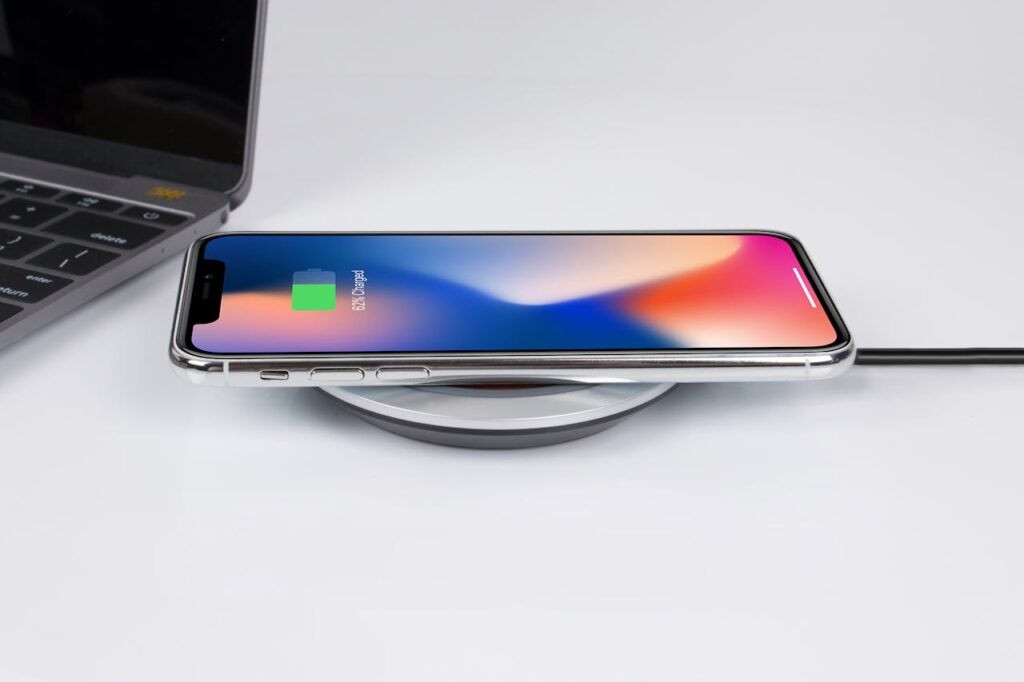Wireless charging has revolutionized the way we power our devices, providing convenience and efficiency. This article explores the pros and cons of wireless charging, helping consumers make informed decisions about integrating this technology into their lives. From its ease of use to potential drawbacks like slower charging speeds, understanding these aspects is crucial for users who rely on portable devices daily.
In today’s fast-paced world, keeping our devices charged is more critical than ever. Wireless charging has emerged as a popular alternative to traditional wired methods. With its sleek design and effortless operation, many individuals are making the switch. However, like any technology, it comes with its own set of advantages and disadvantages that must be evaluated before embracing it fully.
What is wireless charging? Wireless charging utilizes electromagnetic fields to transfer energy between two objects—typically a charger and a mobile device—allowing them to charge without physical cables.
Is wireless charging safe for my device? Yes, most wireless chargers are designed with safety features, including temperature regulation and foreign object detection, ensuring that your device remains safe during the charging process.
Does wireless charging affect battery life? While some studies suggest that leaving your device on a wireless charger for extended periods can lead to battery degradation, if used properly, wireless charging should not significantly impact battery longevity.
Benefits of Wireless Charging
Convenience
The primary allure of wireless charging lies in its convenience. Users no longer have to fumble with cords or worry about finding the right cable.
- No Cables Needed: Simply place your device on the pad and let it charge.
- Multiple Devices: Many pads support charging multiple devices simultaneously.
- Eliminates Wear and Tear: No plugging and unplugging means less wear on charging ports.
- Easy Integration: Can be seamlessly incorporated into desks, cars, and furniture.
Speed of Charging
One significant factor to consider is the charging speed associated with wireless charging compared to traditional methods.
- Standard Speeds: Most wireless chargers provide standard charging rates suitable for everyday use.
- Fast Wireless Charging: Some newer models offer rapid charging capabilities but may require specific devices.
- Slower Than Wired: Typically, wireless charging is slower than wired methods, impacting quick top-ups.
- Environmental Factors: Charging speed can be affected by alignment and case thickness.
Compatibility
Another essential aspect of wireless charging is its compatibility with various devices.
- Qi Standard: Most modern smartphones are compatible with Qi wireless charging standards.
- Universal Chargers: Many third-party chargers accommodate a range of devices across different brands.
- Case-Friendly Options: Many chargers work well even with phone cases attached, though some exceptions exist.
- Future-Proofing: More devices are adopting wireless charging, making it a future-ready choice.
Portability
Wireless charging provides an added level of portability, allowing users to charge their devices on the go.
- Compact Design: Many wireless chargers are slim and lightweight, perfect for travel.
- Car Chargers Available: Numerous options exist for wireless charging in vehicles.
- No Tangled Wires: Reduces clutter when traveling, making it easier to keep everything organized.
- Versatile Use: Great for public spaces like cafes and airports where outlets may be limited.
Safety Features
Safety is paramount when it comes to charging devices, and wireless charging includes several built-in safety features.
- Overheating Protection: Automatic shutdown features prevent overheating while charging.
- Foreign Object Detection: Ensures that only compatible devices receive power, protecting users’ investments.
- Surge Protection: Helps safeguard against voltage spikes that could damage devices.
- Quality Control: High-quality products are tested for safety, giving consumers peace of mind.
Drawbacks of Wireless Charging
Slower Charging Speeds
Despite its convenience, one of the main drawbacks is often the slower charging speeds.
- Longer Wait Times: Individuals often wait longer for a full charge compared to using a wired connection.
- Not Ideal for Quick Charges: If you’re in a rush, you might find traditional charging methods more effective.
- Impact on Usage: Slower speeds can be frustrating for heavy users needing quick top-ups throughout the day.
- Dependent on Positioning: Misalignment can slow down the charging process further.
Higher Costs
Investing in wireless charging equipment can sometimes come with a steeper price tag.
- Charger Prices: Quality wireless chargers can be more expensive than standard wall adapters.
- Potential for Additional Purchases: You may need to buy additional accessories to optimize functionality.
- Upfront Investment: The initial costs may deter some consumers from transitioning to wireless charging.
- Variable Quality: Lower-priced options may lack durability or sufficient safety features.
Device Heat Generation
Heat generation during charging can be a concern when using wireless systems.
- Temperature Increase: Wireless charging can cause devices to heat up more than wired charging.
- Battery Health Risks: Prolonged exposure to high temperatures can degrade battery performance over time.
- Cooling Solutions Needed: Some chargers include fans or vents to mitigate heat buildup.
- Awareness Required: Users should monitor charging times and surroundings to ensure optimal conditions.
Limited Availability of Chargers
Finding a wireless charger may not always be straightforward.
- Location Dependent: Not all locations feature wireless charging stations, especially in rural areas.
- Compatibility Issues: Older devices may not support wireless charging, requiring different solutions.
- Device-Specific Chargers: Some devices require specific chargers, limiting options available to consumers.
- Market Saturation: With so many products available, distinguishing quality can be challenging.
Dependency on Power Source
The reliance on a power source is another point of contention for wireless charging.
- Power Outages: If there is no electricity, wireless charging becomes unusable.
- Cost Considerations: Regularly using wireless chargers may increase electric bills slightly depending on usage habits.
- Fatigue of Power Sources: Frequent charging can strain power outlets, particularly in busy households.
- Portable Options: While portable chargers exist, they may not always support wireless technology.
Wireless charging offers a convenient and modern approach to powering devices, but it’s essential to weigh its pros and cons. From the comfort of simply placing your device on a pad to considerations like charging speed and cost, making an informed decision is vital. Users should evaluate their needs and preferences to determine if wireless charging aligns with their lifestyle. As technology continues to evolve, it’s likely that improvements will address current limitations, making wireless charging an increasingly attractive option.










